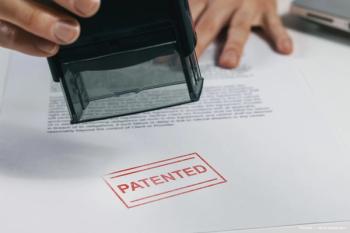
Striving for perfection: Creating the perfect IOL
With acrylic lenses currently dominating the market, the industry continues to consider viable options for IOL materials.
This article was reviewed by Gerd U. Auffarth, MD, PhD
Understanding the characteristics of available
According to Dr. Auffarth’s review of this topic, the perfect material would be optically pure without risk for calcification, glistenings, interaction with substances inside the eye, or long-term degeneration.
Dr. Auffarth is chairman, Department of Ophthalmology, Ruprecht-Karls-University of Heidelberg, Heidelberg, Germany.
Related:
Consideration would be given to refractive index, which dictates material thickness and therefore surgical incision size. Other issues include Abbe number and optical features of the material that are related to refraction and potential side effects, as well as the opportunity for changeability.
Data on the
Read more about IOLs
Discussing the properties of the two types of acrylics, Dr. Auffarth explained that the hydrophobic materials are copolymers that are related to polymethylmethacralate. The various hydrophobic acrylics are relatively similar with respect to refractive index, which is approximately 1.5 (range 1.41 to 1.55), he said.
“High-refractive index is one of the advantages of hydrophobic acrylic as an IOL material,” Dr. Auffarth added. “Other advantages include a low rate of posterior capsule opacification (PCO), rotational stability, resistance against both capsular contraction and Nd:YAG laser-induced damage, and freedom from calcification because the material is inert.”
Related:
Hydrophobic acrylic
“Reports of negative dysphotopsias with IOLs are mostly limited to individual cases or cases series,” Dr. Auffarth said. “Although hydrophobic acrylic lenses are often involved, they have the highest market share.”
The potential for mechanical damage and glistenings is an issue with hydrophobic acrylic materials. Glistenings, which are fluid-filled microvacuoles within the polymer network, can be present before implantation or develop over time when the lens is in the eye.
“Glistenings are not just a cosmetic issue, because they can have a clinical impact by increasing straylight,” Dr. Auffarth pointed out. “With the use of an experimental model for accelerating glistening formation, however, we have found that manufacturers are now doing a good job producing glistening-free lenses.”
Related:
Hydrophilic acrylate IOLs are mostly made of polyhydroxyethylethacrylate and other copolymers. Their advantages include foldability and high biocompatibility. Their high-water content, however, is a disadvantage because it leads to a risk for calcification when the material is in the aqueous environment within the eye or exposed to air or gas, which can occur during various surgical procedures.
Although it can be difficult to get information from manufacturers about
The material also has a high refractive index (1.52) and high Abbe number (50), stable physicochemical properties, low modulus, high elasticity, and superb long-term clarity.
“This material appears to resolve current concerns regarding glistenings, dysphotopsias, chronic inflammation, and PCO. The high-refractive index and Abbe number also allow for a large optic that would enable retina observation,” said Dr. Auffarth.
Gerd Auffarth, MD, Ph
E: [email protected]
This article is based on a presentation given by Dr. Auffarth at the 37th Congress of the European Society of Cataract and Refractive Surgeons. Dr. Auffarth receives research grants from many companies that manufacture IOLs.
Newsletter
Don’t miss out—get Ophthalmology Times updates on the latest clinical advancements and expert interviews, straight to your inbox.


















































.png)


